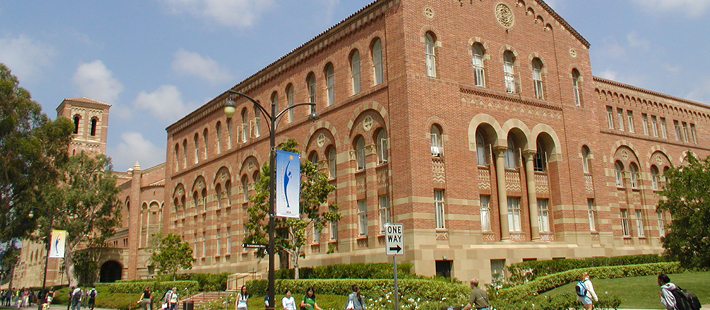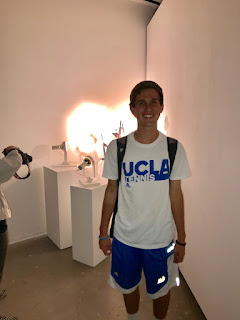Ben Goldberg Week 1 Blog Discussion B
Week 1: Two Cultures
As a freshman and student-athlete at UCLA, I have experienced CP Snow’s concept about two cultures by simply attending class everyday on campus. My science classes are in classrooms on South Campus while my arts and humanities classes are on North Campus. In 1959, Snow created a “cultural controversy” (Vesna) and declared that literary intellectuals were separate from the natural sciences. While I have never given any thought to this notion prior to this week, I can appreciate why he felt that way. I believe the UCLA campus was originally almost 100 years ago separating its arts and sciences buildings because it was universally understood and accepted that literary intellectuals did not need to connect with scientists and vice versa. 
I grew up surrounded by television, movies, advertisements, and an education system that taught me that scientists wore white lab coats and worked on secret projects while artists, writers, and musicians blended into society more seamlessly. This way of thinking is outdated and no longer relevant. I believe that the lines that used to separate science and art have blurred and these two cultures need each other now more than ever. Art and literature have always been at the forefront of popular culture. As Kevin Kelly said, “The cultural center of Western civilization has pivoted around the arts, with science orbiting at a safe distance.” He also observed, “Novelists are hip. Film directors are cool. Scientists, on the other hand, are…nerds.”
The opportunities for students at UCLA are endless and it can be downright daunting for an undeclared major like me. I plan on focusing on my interest in content creation for a society that continues to be driven by technology. Stephen Wilson describes science and technology as not being the same. He says, “Many artists have started to work with new technologies but many less are working with science.” John Brockman declares, “ Literary intellectuals are not communicating with scientists. Scientists are communicating directly with the general public…” Our society needs college graduates to be educated and knowledgeable in both cultures. I see myself as a generalist communicating with artists, scientists, and the general public.
Sources
Graham-Rowe, Duncan. "John Brockman: Matchmaking with Science and Art." WIRED
UK, 23 May 2016. Web. 08 Apr. 2017.
Kelly, Kevin. "The Third Culture." Science. American Association for the Advancement
of Science, 13 Feb. 1998. Web. 08 Apr. 2017.
Snow, C.P. “The Two Cultures and the Scientific Revolution.” New York: Cambridge
University Press, 1959. Print.
Vesna, Victoria. "Toward a Third Culture: Being In Between." Leonardo 34 2001:
121-25. Print.
Wilson, Stephen D. "Myths and Confusions in Thinking about Art/Science/Technology."
College Art Association Meetings, New York, New York, 2000. Print

I really like the way you mentioned stereotypes in the modern society about scientists and artists. On the one hand, the stereotype of a scientist in a lab coat and that of an artist with a brush can overemphasize differences between the two cultures. On the other hand, the stereotypes may share some similarities as well. For example, there is some element of madness in stereotypes for both cultures. Regardless of whether the stereotypes are more similar or more different, the modern society should try to minimize their influences and take on more open perspectives in viewing the two cultures.
ReplyDelete